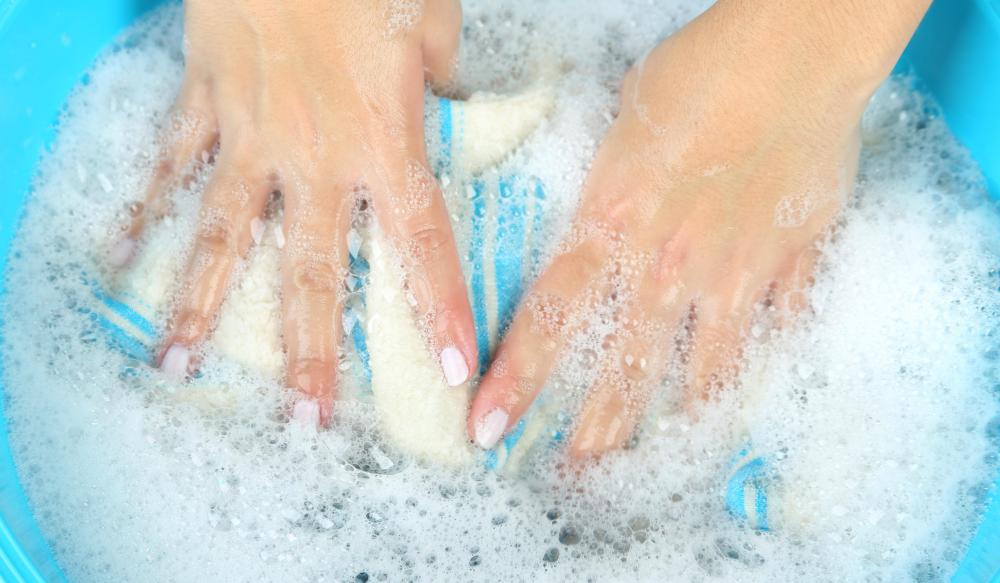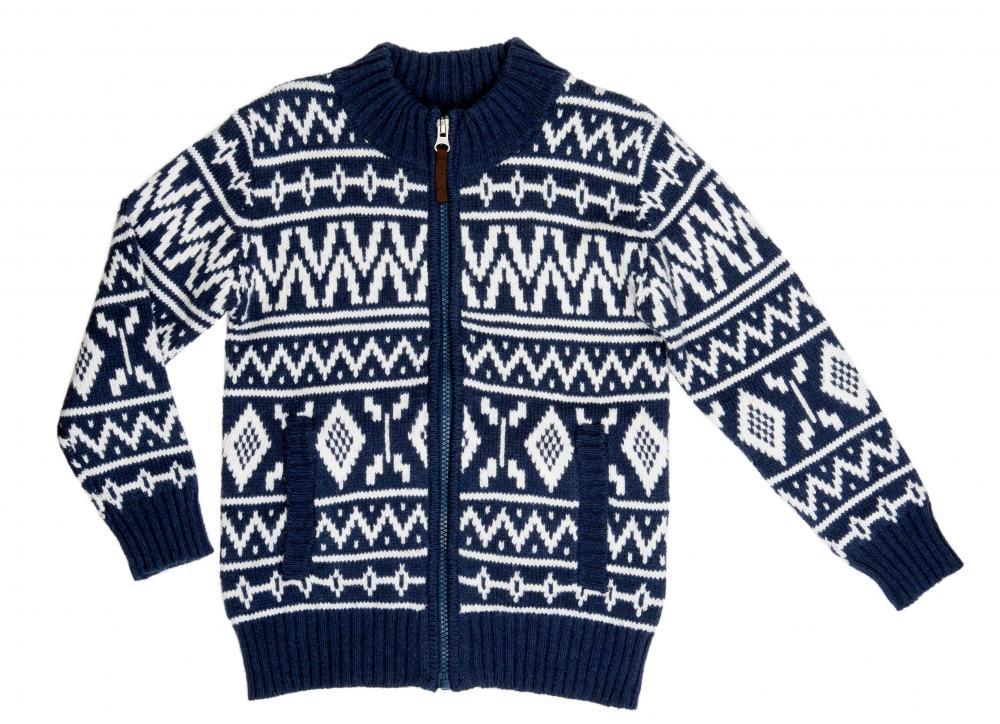At WiseGEEK, we're committed to delivering accurate, trustworthy information. Our expert-authored content is rigorously fact-checked and sourced from credible authorities. Discover how we uphold the highest standards in providing you with reliable knowledge.
How Should I Wash a Sweater?
In some cases, a sweater's label will indicate that it should only be washed by hand. This is often the case with wool sweaters, since wool is a delicate and fussy fiber. Because of this well known property, handwashing sweaters might seem a bit intimidating at first, but it is really quite simple once you learn how to do it. By caring for a sweater well throughout its lifetime, you can keep it clean, crisp, and in perfect shape.
Before outlining the steps involved in washing a sweater, it can help to understand why wool is so difficult to wash. When wool is exposed to an alkaline environment, it opens up the scales of the fibers. If the wool is then agitated, the fibers will cling together, forming a dense mat. Sometimes, this mat is actually desired, and the processing is called fulling or felting. At other times, felting a perfectly good sweater will cause to to shrink dramatically in size. Therefore, when you wash a wool sweater, you want to avoid two things: alkaline detergent, and agitation. Wool also dislikes sudden temperature changes, so wash and rinse a sweater in water of a consistent temperature.

The temperature of the wash water is a subject of hot debate. Some people believe that you should not wash a sweater in hot water, since hot water will encourage felting. This is not actually the case, and hot water may even be better since it can lift embedded grime and grease. When you wash this garment in hot water, however, you must take care not to agitate it at all.

To wash a sweater in cool to lukewarm water, fill a large sink or tub with water and detergent or wool cleaner. Detergent such as dishwashing liquid is a great material for cleaning sweaters, since it is not alkaline, and it is often designed to cut through grease. Lay the sweater in the water and gently swish it a few times, but do not knead or wring the sweater. Rinse the sweater in water of the same temperature, ideally by filling a tub, laying the sweater in, and allowing the detergent to disperse naturally. This may take several changes of water. If you are using hot water, follow the same steps, except avoid any type of agitation to the sweater; simply allow it to sit in the hot water for up to half an hour before rinsing.

After washing, be careful about how you handle the sweater. Wool can get fragile when it is wet, and threads may break or stretch out. Support the weight of the sweater until you lay it out on a towel and roll it up. Gently press the towel, and avoid ringing or squeezing. When you unroll the towel, the sweater should be damp, but not wet.
Your next step is blocking, laying the freshly washed sweater out to dry in a shape that is not twisted or distorted. Lay a dry towel out on a large flat surface, and arrange the sweater more or less as it would be worn on a human body. Allow the sweater to dry completely before folding it for storage, and avoid exposure to direct sunlight. Never hang sweaters to dry or be stored, as the hanging will distort the shape of the sweater.
AS FEATURED ON:
AS FEATURED ON:














Discussion Comments
Yes, quality has a lot to do with it. Pilling happens because of the scales on the wool and friction as mentioned in the article; it's basically localized felting. That is why pilling happens first on the elbows and back of a sweater. The younger the sheep the wool comes from, the fewer scales it has, but the material is more expensive. Fewer/finer scales means fewer pills.
No, once felted, it's done, and cannot be undone.
does the quality of the sweater and its materials contribute to how fast they get those annoying little pills on them? some of my more inexpensive sweaters seem to get them with only a couple of wearings, but my more expensive sweaters last longer. is there any way to avoid these pesky pills?
Great info about washing sweaters. I have a question, though. After a sweater has already felted and shrunk, can one save the sweater? Is there a way to reconstitute or undo the felting. Long ago it was suggested to me to try cheap hair conditioner. That didn't work for me.
Post your comments